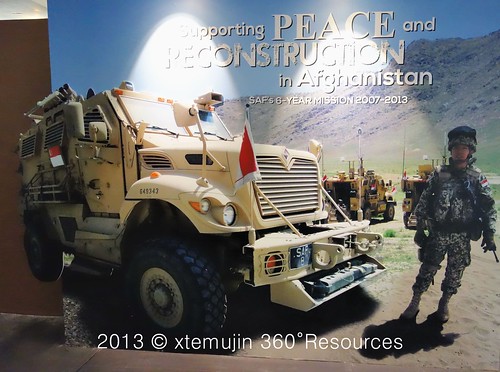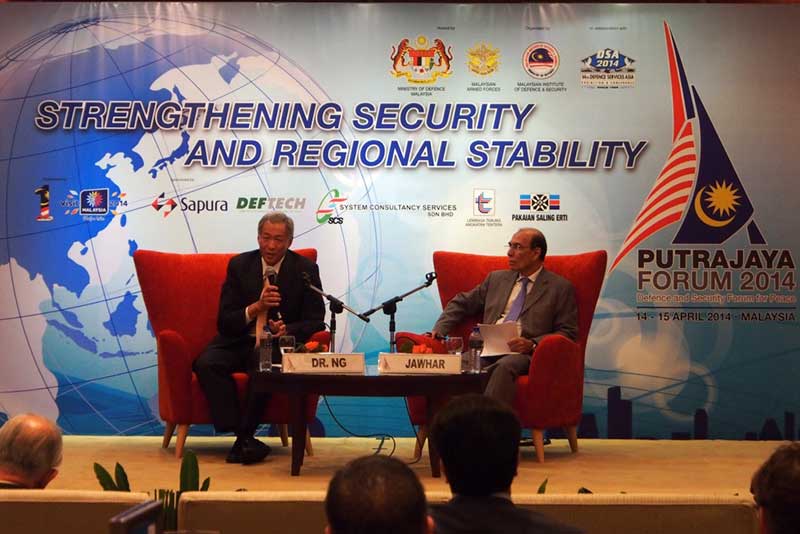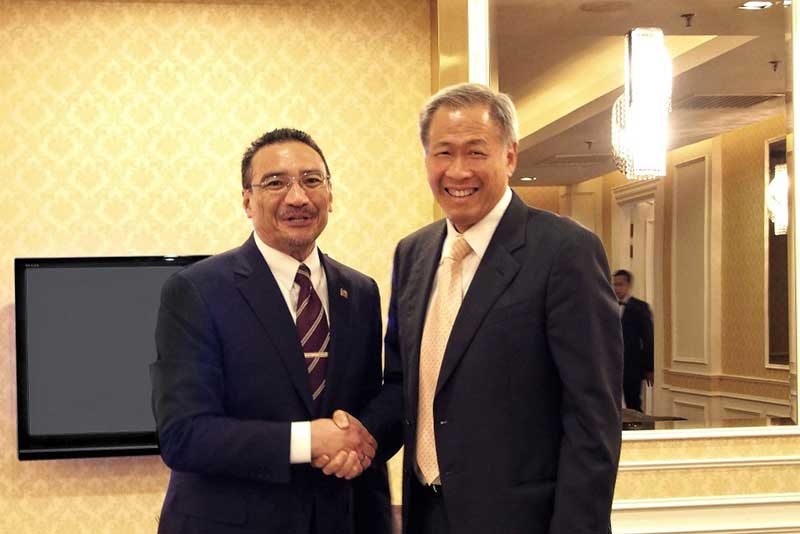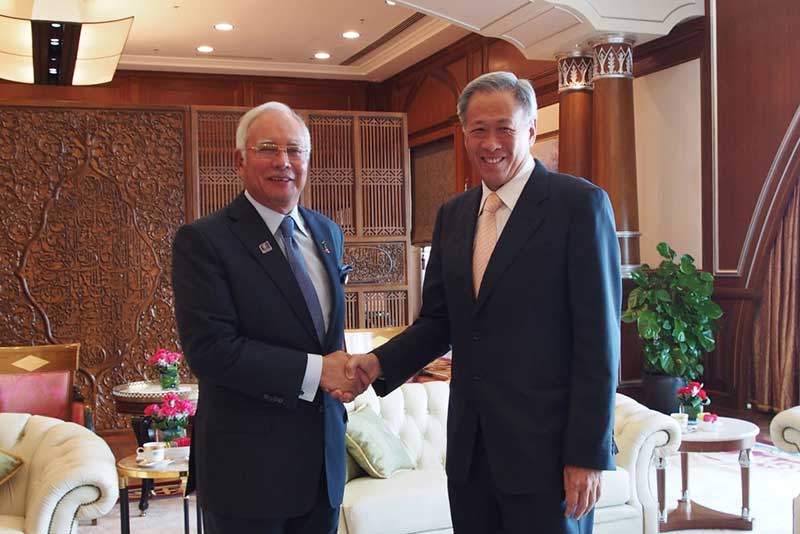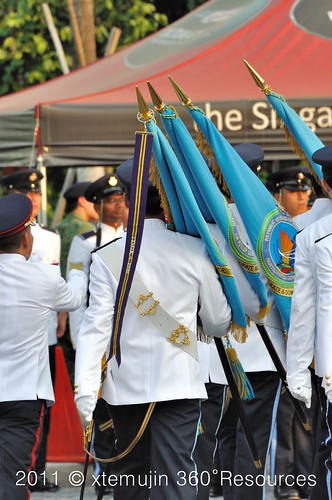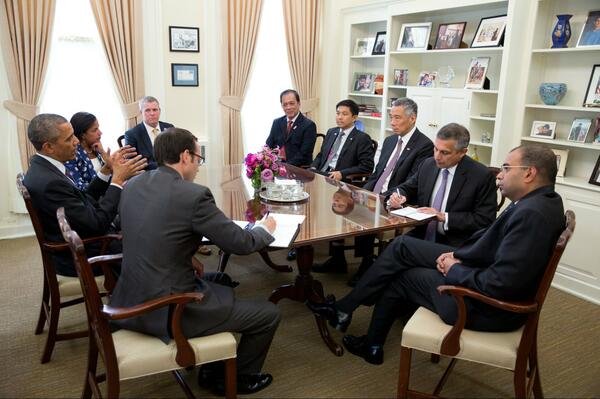This thread continues from an older 7 page thread of Singapore Army Pictures (from end of June 2010 till Feb 2014), here.
Change of Command Parade for the Singapore Army (Part 1 of 2)
Brigadier-General (BG) Perry Lim Cheng Yeow, Chief of Staff - General Staff, took over from Major-General (MG) Ravinder Singh s/o Harchand Singh as Chief of Army on 21 March 2014. This change is part of the continuing process of leadership renewal in the Singapore Armed Forces (SAF).

Above, the colors party of the Singapore Army march in for the COC parade.

Above, the contingents of the different formations of the Singapore Army march in for the COC parade. In the front of the commando formation, is a Master Sergeant that is wearing a number of foreign skill badges (above his right pocket), namely, the US Airborne and Military Free Fall Parachutist Badges, and the Thai Airborne badge. He is also wearing both the SAF airborne and the military freefall skill badges (above his left pocket). Beneath these two SAF skill badges, he is wearing a row of four ribbons, namely, the SAF Good Service Medal (awarded after 5 years of service), the SAF Long Service & Good Conduct (10 Years) Medal, the SAF Overseas Service Medal (denoting overseas operational deployment) and the NATO ISAF medal (denoting service in Afghanistan). He one of 492 SAF personnel who have been deployed by the SAF to Afghanistan from 2007 to 2013.

Above, the parade commander for the COC was COL Fadzully Bin Abas, who is wearing an INTERFET Medal (denoting service in East Timor).

Above, the parade second-in-command was SLTC (NS) Bervyn Lee Peng Hui.

Above, outgoing Chief of Army, MG Ravinder Singh (left), handing over the command symbol to the incoming Chief of Army, BG Perry Lim.

Above, CDF, LG Ng Chee Meng, presenting MG Ravinder Singh the Command Plaque.

Above, marching out of the military colours led by COL Fadzully Bin Abas.
Change of Command Parade for the Singapore Army (Part 1 of 2)
Brigadier-General (BG) Perry Lim Cheng Yeow, Chief of Staff - General Staff, took over from Major-General (MG) Ravinder Singh s/o Harchand Singh as Chief of Army on 21 March 2014. This change is part of the continuing process of leadership renewal in the Singapore Armed Forces (SAF).
On 21st March 2014, MG Ravinder Singh s/o Harchand Singh handed his command as Chief of Army to BG Perry Lim Cheng Yeow in a Change of Command (COC) parade held at Pasir Laba Camp. The witnessing Officer was Chief of Defence Force (CDF), LG Ng Chee Meng.

BG Perry Lim was enlisted into the Singapore Army in December 1990 and commissioned as an officer in the SAF Officer Cadet School in August 1991. A Guards officer by vocation, BG Lim served his junior command, battalion operations officer and brigade operations officer appointments in the Guards formation. BG Lim commanded the 1st Battalion Singapore Guards (1 GDS) from 2003 to 2005, 7th Singapore Infantry Brigade (7 SIB) in 2009 and 3rd Singapore Division (3 DIV) from 2011 to 2013. BG Lim was holding the appointment of Chief of Staff - General Staff before he took over as the Chief of Army on 21 March 2014.
Prior to his appointment as Chief of Staff - General Staff, BG Lim held various key staff appointments in the Singapore Ministry of Defence (MINDEF), during the course of his career. He headed the Joint Plans and Transformation Department of the SAF Headquarters in MINDEF, where he was in charge of strategic planning, long-term capability development and resource management for the SAF. He also held Branch Head appointments in Defence Policy Office, Joint Operations Department, and was the Deputy Assistant Chief of General Staff for Operations.
BG Lim attended the United States Army Command and General Staff College in Fort Leavenworth, Kansas in 2001/2002. He also attended the United Kingdom (UK) Army's Combined Arms Tactics Course in Warminster in 1998. BG Lim was promoted to his current rank on 1 July 2011. He was awarded the Public Administration Medal (Silver) (Military) in 2010.
BG Lim is also a member of the Singapore Administrative Service through the dual-career scheme. From 2006 to 2008, he was seconded to the Singapore Ministry of Education (MOE) to serve as Director of Higher Education, where he was responsible for formulating policies, planning and funding for the Singapore university sector and technical education sector, and regulating the private education sector.
BG Lim received his education in Singapore in Raffles Institution. In 1991, he was awarded the President's Scholarship and SAF Overseas Scholarship to pursue his undergraduate studies in the UK. BG Lim graduated from Cambridge University with a Bachelor of Arts (starred first-class honours) in Engineering in 1994. In 2008, BG Lim was awarded the Lee Kuan Yew Postgraduate Scholarship to pursue his MBA in the INSEAD Business School.

Above, the colors party of the Singapore Army march in for the COC parade.

Above, the contingents of the different formations of the Singapore Army march in for the COC parade. In the front of the commando formation, is a Master Sergeant that is wearing a number of foreign skill badges (above his right pocket), namely, the US Airborne and Military Free Fall Parachutist Badges, and the Thai Airborne badge. He is also wearing both the SAF airborne and the military freefall skill badges (above his left pocket). Beneath these two SAF skill badges, he is wearing a row of four ribbons, namely, the SAF Good Service Medal (awarded after 5 years of service), the SAF Long Service & Good Conduct (10 Years) Medal, the SAF Overseas Service Medal (denoting overseas operational deployment) and the NATO ISAF medal (denoting service in Afghanistan). He one of 492 SAF personnel who have been deployed by the SAF to Afghanistan from 2007 to 2013.

Above, the parade commander for the COC was COL Fadzully Bin Abas, who is wearing an INTERFET Medal (denoting service in East Timor).

Above, the parade second-in-command was SLTC (NS) Bervyn Lee Peng Hui.

Above, outgoing Chief of Army, MG Ravinder Singh (left), handing over the command symbol to the incoming Chief of Army, BG Perry Lim.

Above, CDF, LG Ng Chee Meng, presenting MG Ravinder Singh the Command Plaque.

Above, marching out of the military colours led by COL Fadzully Bin Abas.
Last edited:














































